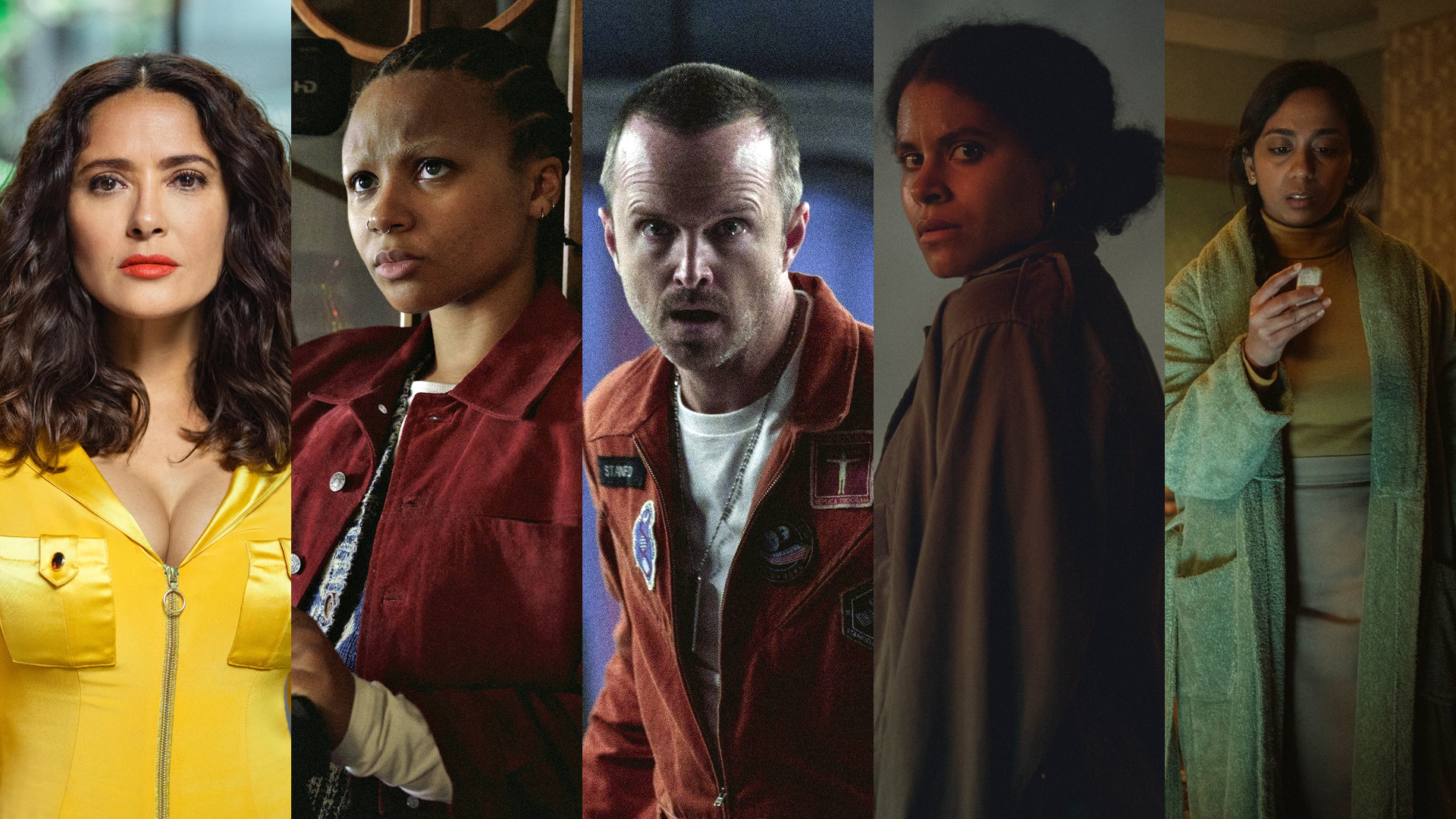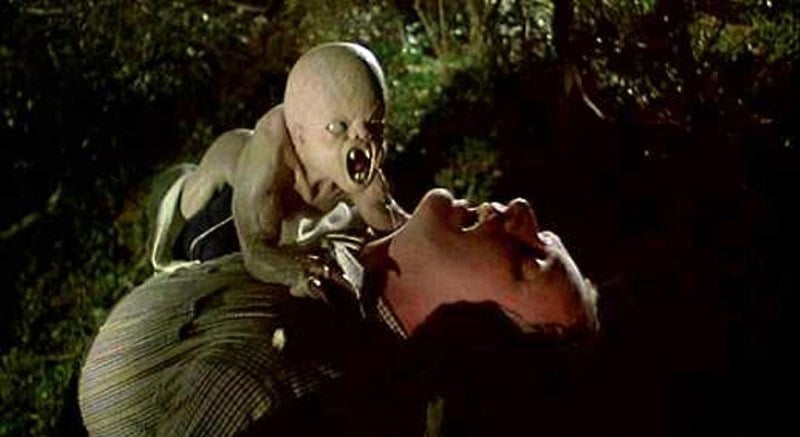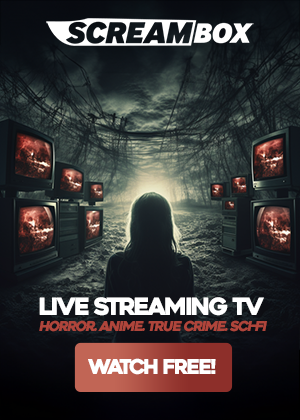Editorials
Netflix’s “Black Mirror” Season 6: Ranking All 5 Brand New Episodes

After several years of waiting, Black Mirror finally returned with its eagerly anticipated sixth season. Charlie Brooker’s anthology series has reflected on contemporary society’s complicated relationship with technology since 2011. Interestingly, though, three of the five episodes in this installment occur somewhere in the past, be it distant or nearby. And even more intriguing, not every entry this time around is bent on delivering techno-dystopian dread. In fact, multiple tales are devoid of terror brought on by our overreliance on gadgets, science, and artifice.
Black Mirror was previously concerned with the immediate present or the conceivable future. However, based on this season’s episodes, the creator has perhaps grown weary of the “now.” The world that Brooker envisioned — not to mention warned us about — has, in some ways, come to fruition. These past couple of years, reality has proven to be more unsettling than whatever Black Mirror can cook up.
This latest Black Mirror season turned out to be a real jumble. It starts off in expected territory before promptly detouring. It’s definitely not the most cohesive season so far, yet Season 6 offers a healthy amount of variety as well as a few genuine surprises.
Read on for Bloody Disgusting’s Black Mirror Season 6 ranking.
5. Mazey Day

Set in the early 2000s, “Mazey Day” remembers the days of celebrities being hounded by paparazzi. Brooker naturally adds a sinister element to an already uncomfortable phenomenon, and the end result gives new meaning to the phrase “feeding frenzy.” The initial predators in this story are indeed Zazie Beetz’s character and her fellow photojournalists, but things change when they all bite off more than they can chew.
Black Mirror viewers will wait for but never find the science element in “Mazey Day.” Without spoiling the bizarre ending, this episode sidesteps the series’ standard motif and serves up something more tangibly horrific. Had this entry been a part of another genre anthology, particularly something like American Horror Stories, maybe it would have been less out of place and also better received.
4. Demon 79

The season finale is the first (and, hopefully, not last) episode to be released under the “Red Mirror” label. This experiment in genre removes the typical dangerous-science theme altogether. The shift in genre notwithstanding, the series’ trademark weirdness remains intact as a department store clerk is handed a bizarre task; Anjana Vasan’s character must sacrifice three people in order to prevent the apocalypse. And guiding the skeptical protagonist on her dark, world-saving mission is a novice demon (Paapa Essiedu) who only she can see.
In “Demon 79,” the series shakes off its sci-fi confines and jumps somewhere into the horror arena. Sad to say, this high-concept story is carried out too simply for a show like Black Mirror. From the distracting, Death Note-esque guide to the predictable outcome, “Demon 79” is as uninspired as its faux ‘70s aesthetic. Brooker shouldn’t be discouraged from adding to the “Red Mirror” label, but future horror ventures would benefit from more demanding stories and executions.
3. Joan is Awful

While Season 6’s goofy opener might seem like Black Mirror biting the hand that feeds it, this increasingly hilarious episode doesn’t quite leave enough teeth marks. Sure, “Joan is Awful” takes a prominent swipe at Netflix by introducing Streamberry, a recurring analog for the streaming giant. However, with Netflix evidently in on the gag — the streamer going so far as to lend its own interface and signature “tudum” sound — “Joan is Awful” only delivers half-effective commentary about A.I., data collection, and deepfake technology.
Annie Murphy and the show-stealing Salma Hayek are well cast in this cautionary tale that feels even more punctual now that real-life screenwriters are fighting for better treatment and pay. “Joan is Awful” openly points out the prevalent trends that are endangering the entertainment industry without also getting too cross with its obvious target. And compared to what all followed the season premiere, this episode is rather optimistic. That in itself is strange in the world of Black Mirror.
2. Beyond the Sea

The third episode is set in a retrofuturistic version of 1969 where America is studying the impact of space on humans. Josh Hartnett and Aaron Paul’s characters are this important mission’s guinea pigs who manage to stay in contact with their loved ones on Earth via artificial replicas. Eventually, a personal tragedy back home triggers something disturbing inside one of the two astronauts.
“Beyond the Sea” is the only feature-length episode here, and its slow-burn pacing may turn off impatient viewers. Of all the stories in Season Six, though, this one uses its technological component to flesh out the characters and study their relationships. The startling ending won’t please everyone, but it is guaranteed to stay with you.
1. Loch Henry

The sinister science aspect is also absent from “Loch Henry,” but even so, this episode doesn’t steer off course as much as, say, “Mazey Day.” Streamberry returns in a much smaller capacity than before, although Brooker deems the platform and others like it a symptom of a bigger problem. In a bid to make money and gain exposure, the two young filmmakers (Samuel Blenkin and Myha’la Herrold) here set out to make a true-crime documentary about an old case. Just when they think they’ve found everything they can about these crimes, they dig up something both new and shocking.
By now, the true-crime wave has experienced more than its fair share of criticism, so Black Mirror’s own takedown is belated. And to some, maybe even unnecessary. The episode’s commentary about exploitation and profiting off of personal trauma is nothing new, however, the story’s twists and turns are what make “Loch Henry” so memorable. It leaves on a sad and sobering note like a lot of other episodes, yet it also gives you a real case of the creeps.
Black Mirror Season 6 is now streaming on Netflix.

Editorials
What’s Wrong with My Baby!? Larry Cohen’s ‘It’s Alive’ at 50

Soon after the New Hollywood generation took over the entertainment industry, they started having children. And more than any filmmakers that came before—they were terrified. Rosemary’s Baby (1968), The Exorcist (1973), The Omen (1976), Eraserhead (1977), The Brood (1979), The Shining (1980), Possession (1981), and many others all deal, at least in part, with the fears of becoming or being a parent. What if my child turns out to be a monster? is corrupted by some evil force? or turns out to be the fucking Antichrist? What if I screw them up somehow, or can’t help them, or even go insane and try to kill them? Horror has always been at its best when exploring relatable fears through extreme circumstances. A prime example of this is Larry Cohen’s 1974 monster-baby movie It’s Alive, which explores the not only the rollercoaster of emotions that any parent experiences when confronted with the difficulties of raising a child, but long-standing questions of who or what is at fault when something goes horribly wrong.
Cohen begins making his underlying points early in the film as Frank Davis (John P. Ryan) discusses the state of the world with a group of expectant fathers in a hospital waiting room. They discuss the “overabundance of lead” in foods and the environment, smog, and pesticides that only serve to produce roaches that are “bigger, stronger, and harder to kill.” Frank comments that this is “quite a world to bring a kid into.” This has long been a discussion point among people when trying to decide whether to have kids or not. I’ve had many conversations with friends who have said they feel it’s irresponsible to bring children into such a violent, broken, and dangerous world, and I certainly don’t begrudge them this. My wife and I did decide to have children but that doesn’t mean that it’s been easy.

Immediately following this scene comes It’s Alive’s most famous sequence in which Frank’s wife Lenore (Sharon Farrell) is the only person left alive in her delivery room, the doctors clawed and bitten to death by her mutant baby, which has escaped. “What does my baby look like!? What’s wrong with my baby!?” she screams as nurses wheel her frantically into a recovery room. The evening that had begun with such joy and excitement at the birth of their second child turned into a nightmare. This is tough for me to write, but on some level, I can relate to this whiplash of emotion. When my second child was born, they came about five weeks early. I’ll use the pronouns “they/them” for privacy reasons when referring to my kids. Our oldest was still very young and went to stay with my parents and we sped off to the hospital where my wife was taken into an operating room for an emergency c-section. I was able to carry our newborn into the NICU (natal intensive care unit) where I was assured that this was routine for all premature births. The nurses assured me there was nothing to worry about and the baby looked big and healthy. I headed to where my wife was taken to recover to grab a few winks assuming that everything was fine. Well, when I awoke, I headed back over to the NICU to find that my child was not where I left them. The nurse found me and told me that the baby’s lungs were underdeveloped, and they had to put them in a special room connected to oxygen tubes and wires to monitor their vitals.
It’s difficult to express the fear that overwhelmed me in those moments. Everything turned out okay, but it took a while and I’m convinced to this day that their anxiety struggles spring from these first weeks of life. As our children grew, we learned that two of the three were on the spectrum and that anxiety, depression, ADHD, and OCD were also playing a part in their lives. Parents, at least speaking for myself, can’t help but blame themselves for the struggles their children face. The “if only” questions creep in and easily overcome the voices that assure us that it really has nothing to do with us. In the film, Lenore says, “maybe it’s all the pills I’ve been taking that brought this on.” Frank muses aloud about how he used to think that Frankenstein was the monster, but when he got older realized he was the one that made the monster. The aptly named Frank is wondering if his baby’s mutation is his fault, if he created the monster that is terrorizing Los Angeles. I have made plenty of “if only” statements about myself over the years. “If only I hadn’t had to work so much, if only I had been around more when they were little.” Mothers may ask themselves, “did I have a drink, too much coffee, or a cigarette before I knew I was pregnant? Was I too stressed out during the pregnancy?” In other words, most parents can’t help but wonder if it’s all their fault.

At one point in the film, Frank goes to the elementary school where his baby has been sighted and is escorted through the halls by police. He overhears someone comment about “screwed up genes,” which brings about age-old questions of nature vs. nurture. Despite the voices around him from doctors and detectives that say, “we know this isn’t your fault,” Frank can’t help but think it is, and that the people who try to tell him it isn’t really think it’s his fault too. There is no doubt that there is a hereditary element to the kinds of mental illness struggles that my children and I deal with. But, and it’s a bit but, good parenting goes a long way in helping children deal with these struggles. Kids need to know they’re not alone, a good parent can provide that, perhaps especially parents that can relate to the same kinds of struggles. The question of nature vs. nurture will likely never be entirely answered but I think there’s more than a good chance that “both/and” is the case. Around the midpoint of the film, Frank agrees to disown the child and sign it over for medical experimentation if caught or killed. Lenore and the older son Chris (Daniel Holzman) seek to nurture and teach the baby, feeling that it is not a monster, but a member of the family.
It’s Alive takes these ideas to an even greater degree in the fact that the Davis Baby really is a monster, a mutant with claws and fangs that murders and eats people. The late ’60s and early ’70s also saw the rise in mass murderers and serial killers which heightened the nature vs. nurture debate. Obviously, these people were not literal monsters but human beings that came from human parents, but something had gone horribly wrong. Often the upbringing of these killers clearly led in part to their antisocial behavior, but this isn’t always the case. It’s Alive asks “what if a ‘monster’ comes from a good home?” In this case is it society, environmental factors, or is it the lead, smog, and pesticides? It is almost impossible to know, but the ending of the film underscores an uncomfortable truth—even monsters have parents.
As the film enters its third act, Frank joins the hunt for his child through the Los Angeles sewers and into the L.A. River. He is armed with a rifle and ready to kill on sight, having divorced himself from any relationship to the child. Then Frank finds his baby crying in the sewers and his fatherly instincts take over. With tears in his eyes, he speaks words of comfort and wraps his son in his coat. He holds him close, pats and rocks him, and whispers that everything is going to be okay. People often wonder how the parents of those who perform heinous acts can sit in court, shed tears, and defend them. I think it’s a complex issue. I’m sure that these parents know that their child has done something evil, but that doesn’t change the fact that they are still their baby. Your child is a piece of yourself formed into a whole new human being. Disowning them would be like cutting off a limb, no matter what they may have done. It doesn’t erase an evil act, far from it, but I can understand the pain of a parent in that situation. I think It’s Alive does an exceptional job placing its audience in that situation.

Despite the serious issues and ideas being examined in the film, It’s Alive is far from a dour affair. At heart, it is still a monster movie and filled with a sense of fun and a great deal of pitch-black humor. In one of its more memorable moments, a milkman is sucked into the rear compartment of his truck as red blood mingles with the white milk from smashed bottles leaking out the back of the truck and streaming down the street. Just after Frank agrees to join the hunt for his baby, the film cuts to the back of an ice cream truck with the words “STOP CHILDREN” emblazoned on it. It’s a movie filled with great kills, a mutant baby—created by make-up effects master Rick Baker early in his career, and plenty of action—and all in a PG rated movie! I’m telling you, the ’70s were wild. It just also happens to have some thoughtful ideas behind it as well.
Which was Larry Cohen’s specialty. Cohen made all kinds of movies, but his most enduring have been his horror films and all of them tackle the social issues and fears of the time they were made. God Told Me To (1976), Q: The Winged Serpent (1982), and The Stuff (1985) are all great examples of his socially aware, low-budget, exploitation filmmaking with a brain and It’s Alive certainly fits right in with that group. Cohen would go on to write and direct two sequels, It Lives Again (aka It’s Alive 2) in 1978 and It’s Alive III: Island of the Alive in 1987 and is credited as a co-writer on the 2008 remake. All these films explore the ideas of parental responsibility in light of the various concerns of the times they were made including abortion rights and AIDS.
Fifty years after It’s Alive was initially released, it has only become more relevant in the ensuing years. Fears surrounding parenthood have been with us since the beginning of time but as the years pass the reasons for these fears only seem to become more and more profound. In today’s world the conversation of the fathers in the waiting room could be expanded to hormones and genetic modifications in food, terrorism, climate change, school and other mass shootings, and other threats that were unknown or at least less of a concern fifty years ago. Perhaps the fearmongering conspiracy theories about chemtrails and vaccines would be mentioned as well, though in a more satirical fashion, as fears some expectant parents encounter while endlessly doomscrolling Facebook or Twitter. Speaking for myself, despite the struggles, the fears, and the sadness that sometimes comes with having children, it’s been worth it. The joys ultimately outweigh all of that, but I understand the terror too. Becoming a parent is no easy choice, nor should it be. But as I look back, I can say that I’m glad we made the choice we did.
I wonder if Frank and Lenore can say the same thing.













You must be logged in to post a comment.